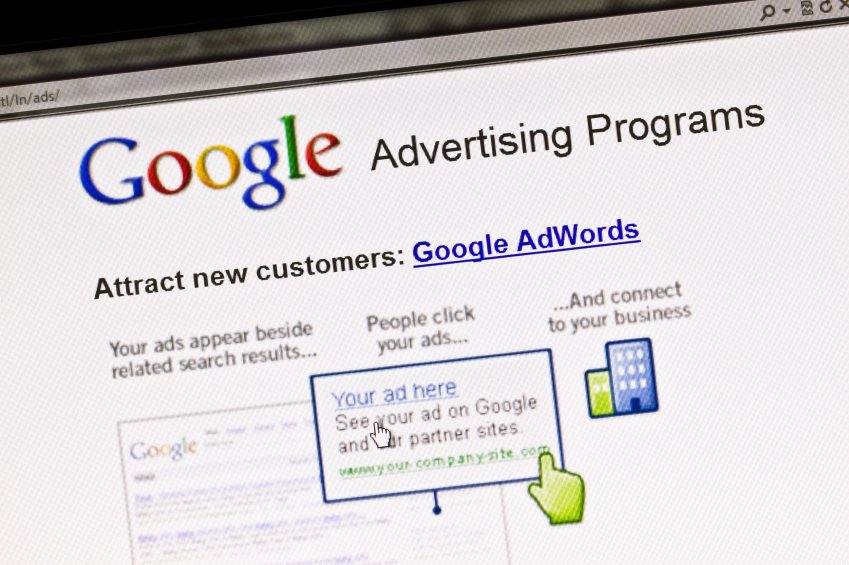
Google Adwords Changes You Want to Know
If you’re already using Google Adwords to run your pay-per-click (PPC) campaigns, you may have noticed some changes within your Adwords campaigns recently. In February, Google released the option to upgrade to Enhanced Campaigns. By mid-2013, all campaigns will be automatically upgraded to Enhanced Campaigns. What does this mean for you and your business? Let’s take a peek at these new changes and how they’ll affect your PPC campaigns.
Targeting Options – People are constantly switching between devices – mobile, tablet, or desktop – and using the one that works best for them based on their location/time and their end goal. Google’s new Enhanced Campaigns focus on this idea and are meant to allow you to better target the context of users searches. Whether it’s context in the form of a location, time of day, and/or device, enhanced campaigns allow you to customize your targeting strategy even more all from single campaign adjustments versus individually managed device campaigns. This provides you with more opportunities to reach people with more relevant and targeted messages.
Bidding – Because all devices perform slightly differently and some may be more relevant to your specific business model, it was a considered best practice to separate campaigns for each specific device, whether it was mobile, tablet, or desktop, each had specific keyword bids. Now you’ll be able to set bids according to each specific device that you’re targeting within the very same campaign. Per Marketingland.com, “The key difference is that desktop and tablet device bids will be grouped and mobile devices bids will be based on a percentage of the desktop and tablet bid.”
Ad Scheduling – With enhanced ad scheduling, you can dictate when certain ads and extensions appear to which users and on which device. For example, if you have a retail location, when your store is open, you can have ads that show links to a store locator, as well as your business phone number for mobile users. After business hours, you can sets ads to only show links to your website where customers can place online orders. Additionally, you can adjust bid percentages to show more for peak times of business hours.
Extensions – Previously, one of the biggest drawbacks to ad extensions was the fact that they were only at the “campaign” level. In addition, to use these extensions, all the extensions had to be approved in order to be seen. In other words, if you had multiple extensions and one was denied, they all were denied. But now with Enhanced Campaigns, you can have more granular control over each extension and also at an “ad group” level. By being able to target a specific product, feature, or web page through the use of sitelink, call, app, or offer extensions in conjunction with targeted ad groups, you as an advertiser have the ability to deliver highly relevant business information, which in theory should yield more conversions.
Advanced Reporting – Some of the new advanced reporting will be especially helpful, specifically for extension and call data tracking.
Extension Tracking – Before the enhancements, tracking the success of extensions individually was only available by building unique URLs. While doable, it’s a lot more time consuming and could prove to be difficult for new or novice users. Now with enhanced extensions tracking, you can view individual statistics for different extensions, whether it’s a link to a specific page on your site, coupon redemption, or an app download.
Call Data Tracking – According to Search Engine Journal, today, with Enhanced Campaigns, you’re able to configure the conversion tracking to record calls over a duration of time as a “lead.” Now not only can you see how many times a phone number was clicked on, you can see if it was determined to be a “lead” or not.
Noticeable Drawbacks to New Enhanced Campaigns
Of course with Google trying to unify all devices into one campaign, it may ultimately cause you, the advertiser, to lose some control over the granularity of your campaign management. Below are some of the more notable drawbacks:
Keyword Level Bidding – In a nutshell, with these new changes, you may lose the ability to set device-specific bids at the keyword level. Because the way the devices are grouped, Marketing Land states tablets will be considered the same as desktops and mobile bids will actually be based on a percentage of your desktop bid as opposed to setting individual bids for each keyword. This may cause you to over or under spend on certain keywords on certain devices. It’ll also require you to really consider which devices bring in the best customers, and to adjust bids to reflect which is more important to you.
Ad Scheduling – With Enhanced Campaigns, you can still adjust bids by day-of-week or time-of-day but Marketing Land says that same schedule will be applied across all devices. Whereas before, you could make separate campaigns for desktop and mobile, setting different schedules for each, this option is no longer an available with enhanced campaigns.
Quality Score – Again because these different devices can’t be separated, Search Engine Journal states that the Quality Score becomes averaged throughout all these devices. This could mean a drop in quality score if your campaign is performing poorly on one of the devices.
By utilizing these new features, small-to-medium-sized businesses stand the most to gain. Ignoring any of these 3 areas (tablets, mobile, desktop) not only leaves the door open for your competitors to engage with your customers, but could also mean missed opportunities for your business to get noticed and most importantly, missed sales.
For more information and how to get started with Google Enhanced campaigns, you can download a step-by-step guide on how to upgrade your existing Adwords campaigns, as well as find other valuable resources like Webinars.
© 2013 – 2018, Contributing Author. All rights reserved.


